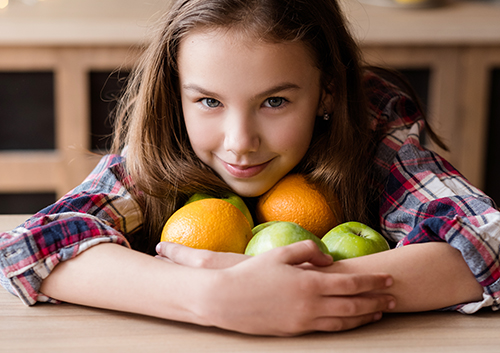Summer Treats for Healthy Teeth
June 4th, 2025

School’s out for the summer, and it’s great to have the kids home. After all, they deserve a break after all their hard work. And you want to keep their vacation happy, relaxing, and fun—without letting them spend those summer months cooling off with sugary treats. What are some of your options for healthy hot weather snacks?
- Naturally Sweet Treats
Keep a supply of fresh fruit handy for summer snacking. Crispy fruits like apples and Bosc pears actually provide a little scrubbing action for the teeth with their vitamins, and softer fruits such as bananas, berries, and, of course, watermelon, provide natural sweetness along with vitamins and minerals. Yogurt has valuable calcium for strong teeth and the vitamin D our bodies need to use that calcium. Add some fresh fruit to Greek yogurt for added flavor and sweetness—and even more vitamins.
- Savory Snacks
Cheese is a calcium-rich snack, and crunchy carrots and celery help scrub teeth while providing vitamins and minerals. Do a little mixing and matching by adding some cream cheese to that celery for extra flavor. Serve up hummus and pita chips or cheese with whole grain crackers. They’re great nutritious alternatives to chips and dip.
- Blender Blast
Summer’s the perfect time to use your culinary creativity and expand your child’s palate with vitamin-rich smoothies. Toss your favorite fruits in the blender with a little juice, non-fat yogurt, milk, or honey, whirl away, and you have a delicious, healthy snack. You can add a few leafy greens for even more nutritional value. There are many easy recipes online for creating homemade smoothies that will please any picky palate.
- Freezer Favorites
Ice cream is a favorite summer treat, but it can also provide quite a sugar punch. There are many homemade frozen yogurt recipes available online which combine frozen fruit, yogurt, and honey for your own summer celebration, without adding large amounts of sugar. Or choose to stock your freezer shelves with low-sugar fruit pops, store bought or homemade.
- On Tap
A soda or a sports drink are often the go-to hydration choices in the summer. You might already be careful about handing these drinks out because they can have such a high sugar content. But they can also create a very acidic environment in the mouth, which is harmful to tooth enamel. Water is the safest, healthiest option for hydrating in hot weather, and can even provide some of the fluoride which helps keep enamel strong.
Whatever is on your child’s summer menu, keep up with all those great dental habits you’ve already established. A limited number of snacks—even healthy ones—is best, and be sure to brush after snacking, or rinse with water if brushing’s not an option. And don’t forget to maintain your child’s normal schedule of brushing and flossing, and regular visits with Dr. Clay Gangwisch, Dr. Mike Grandy, Dr. Daniel Melzer, and Dr. John Miller at our Lynn Haven or Panama City Beach office.
Have a great summer, and send your kids back to school rested, relaxed, and with a healthy, happy smile. Then take a moment, relax, and sip that smoothie—after all, you deserve a break after all your hard work!


